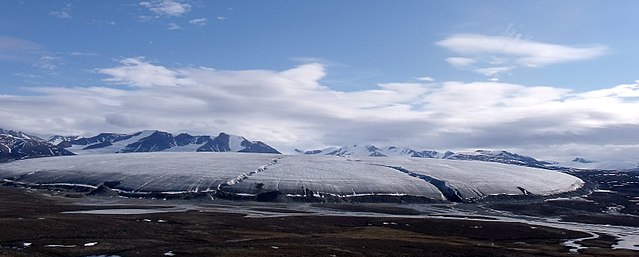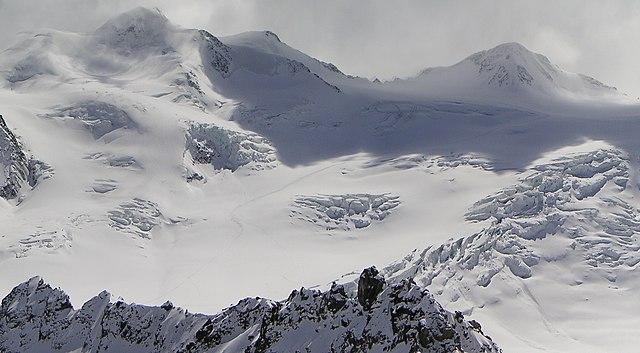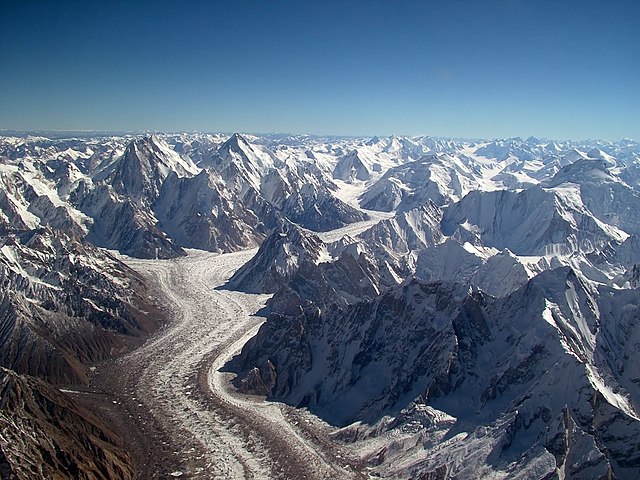Glaciology is the scientific study of glaciers, or, more generally, ice and natural phenomena that involve ice.
Lateral moraine on a glacier joining the Gorner Glacier, Zermatt, Swiss Alps. The moraine is the high bank of debris in the top left hand quarter of the image.
Glaciologist Erin Pettit in Antarctica, 2016
A Bylot Island glacier, Sirmilik National Park, Nunavut. This mountain glacier is one of many coming down from the interior ice cap on top of the Byam Martin Mountains.
Khurdopin glacier and Shimshal River, Gilgit-Baltistan, northern Pakistan 2017. Several glaciers flow into the Shimshal Valley, and are prone to blocking the river. Khurdopin glacier surged in 2016–17, creating a sizable lake.
A glacier is a persistent body of dense ice that is constantly moving under its own weight. A glacier forms where the accumulation of snow exceeds its ablation over many years, often centuries. It acquires distinguishing features, such as crevasses and seracs, as it slowly flows and deforms under stresses induced by its weight. As it moves, it abrades rock and debris from its substrate to create landforms such as cirques, moraines, or fjords. Although a glacier may flow into a body of water, it forms only on land and is distinct from the much thinner sea ice and lake ice that form on the surface of bodies of water.
Glacier of the Geikie Plateau in Greenland.
The Taschachferner in the Ötztal Alps in Austria. The mountain to the left is the Wildspitze (3.768 m), second highest in Austria.
With 7,253 known glaciers, Pakistan contains more glacial ice than any other country on earth outside the polar regions. At 62 kilometres (39 mi) in length, the pictured Baltoro Glacier is one of the world's longest alpine glaciers.
The Quelccaya Ice Cap in Peru is the second-largest glaciated area in the tropics








